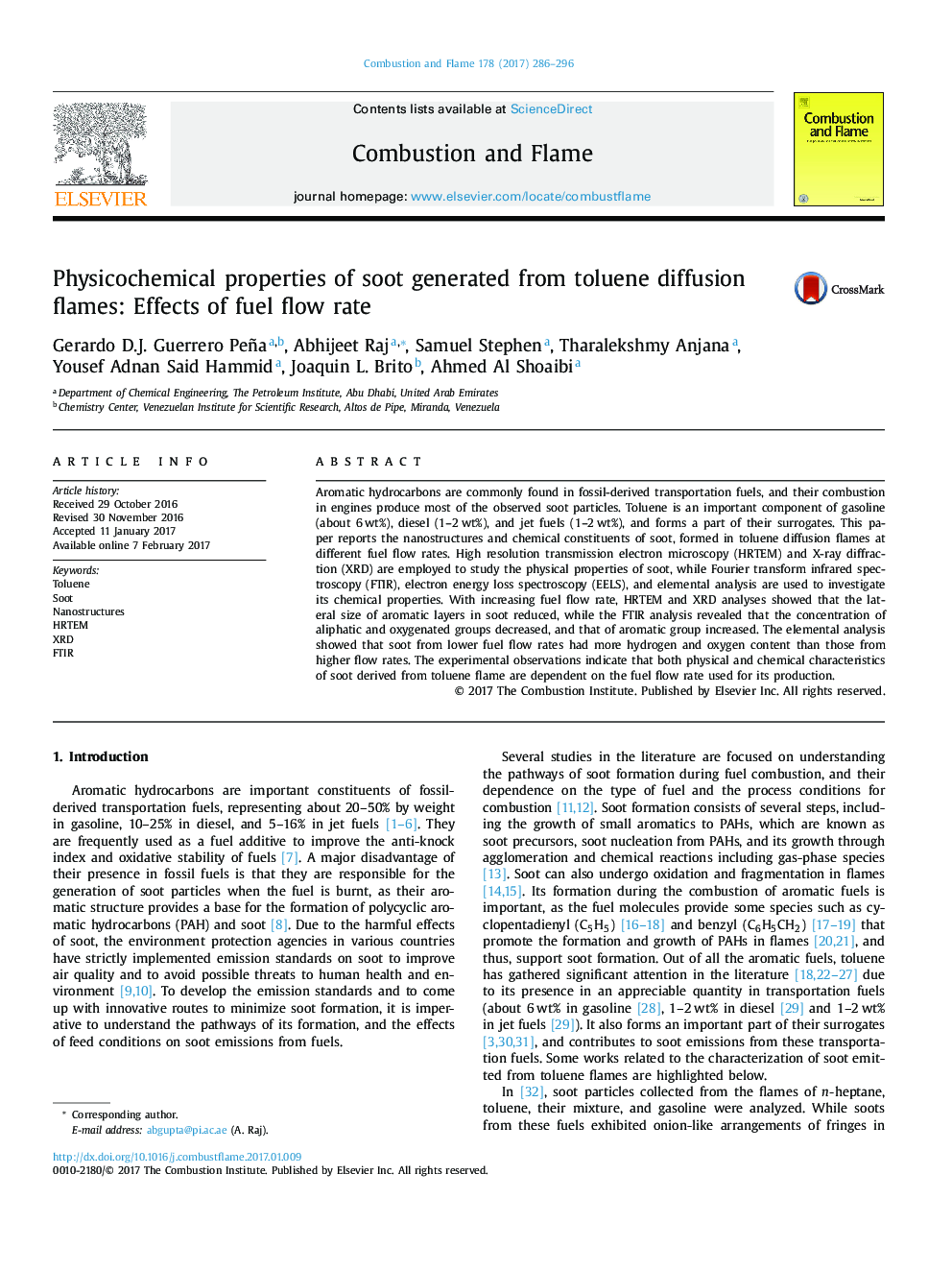| Article ID | Journal | Published Year | Pages | File Type |
|---|---|---|---|---|
| 6468600 | Combustion and Flame | 2017 | 11 Pages |
Aromatic hydrocarbons are commonly found in fossil-derived transportation fuels, and their combustion in engines produce most of the observed soot particles. Toluene is an important component of gasoline (about 6Â wt%), diesel (1-2Â wt%), and jet fuels (1-2Â wt%), and forms a part of their surrogates. This paper reports the nanostructures and chemical constituents of soot, formed in toluene diffusion flames at different fuel flow rates. High resolution transmission electron microscopy (HRTEM) and X-ray diffraction (XRD) are employed to study the physical properties of soot, while Fourier transform infrared spectroscopy (FTIR), electron energy loss spectroscopy (EELS), and elemental analysis are used to investigate its chemical properties. With increasing fuel flow rate, HRTEM and XRD analyses showed that the lateral size of aromatic layers in soot reduced, while the FTIR analysis revealed that the concentration of aliphatic and oxygenated groups decreased, and that of aromatic group increased. The elemental analysis showed that soot from lower fuel flow rates had more hydrogen and oxygen content than those from higher flow rates. The experimental observations indicate that both physical and chemical characteristics of soot derived from toluene flame are dependent on the fuel flow rate used for its production.
